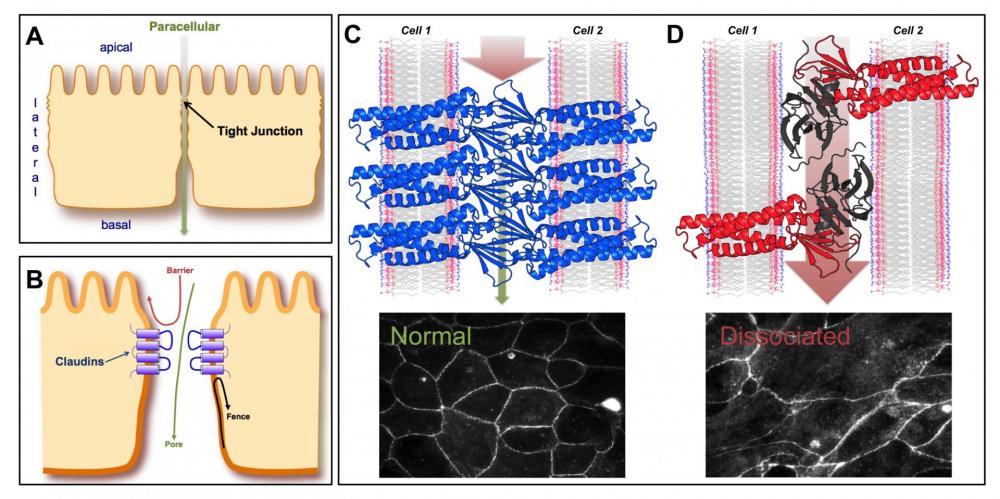
Intercellular communication between epithelial tissues through tight junctions
(A) Epithelial tissues are held together at apical surfaces by tight junctions, macromolecular complexes that organize in novel ways to direct paracellular transport of solutes between cell sheets. (B) Claudins, a family of integral membrane proteins, reside at tight junctions and impart permeability to epithelium, creating a barrier or size/charge−selective pore. (C) Normally, tissue-specific expression of claudins results in highly-regulated movements of molecules through paracelluar space, with accompanying fortification of cell-cell contacts. (D) Under certain physiological conditions or during disease processes, large or small molecules can disrupt vital claudin interactions, resulting in unregulated paracelluar transport via tight junction dissociation. Led by Dr. Alex Vecchio, UNL Department of Biochemistry, this project aims to elucidate tight junction formation and deformation at the molecular level. These studies will clarify our understanding of tight junction structure−function and the biomolecular mechanisms that cause tight junction disruptions and lead to human disease.
Learn more about Dr. Vecchio's research and lab https://vecchio-lab.unl.edu/